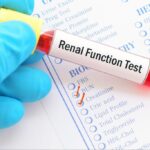Living with peripheral artery disease (PAD) is distressing, even a short walk can feel painful. The plaque buildup inside the arteries restricts the amount of blood that flows to your legs. This causes discomfort while exercising. Here’s what you should know about the ideal workout for the symptoms of PAD.
What is an Ideal Workout for PAD?
One of the best workouts for PAD is walking. While it may seem like working out will make PAD condition worse, rather it helps improve the circulation and ease the pain. It is a low-impact activity that elevates the heart rate. PAD restricts the blood flow in the legs while walking increases the blood flow. You will feel discomfort at the beginning, but it will go away over time. Aim to keep a good pace and continue to walk even if you feel mild pain.
Take a short break if the pain continues. Make a goal to increase the length of walking time by five minutes every week till you go to 45 minutes without breaks. After three to six months of walking regularly, the person will see a significant improvement in their PAD condition.
The purpose of this workout therapy is to help the patients with PAD, to build up their tolerance to walking. This can increase one’s ability to carry out daily tasks. Even if you do not experience quick results, do not give up! Steady dedication to your workout routine can lead to steady improvement.
Why Should a Person Workout for PAD?
Why should a person work out for PAD? While the activity may exacerbate PAD symptoms, it can improve circulation and reduce pain. Because PAD reduces blood supply to the muscles in your legs, you may experience unpleasant cramping. Exercise makes you work harder, which improves blood flow. To keep the PAD symptoms and the plague buildup at the bay, a person should try and always work out for peripheral arterial disease.




